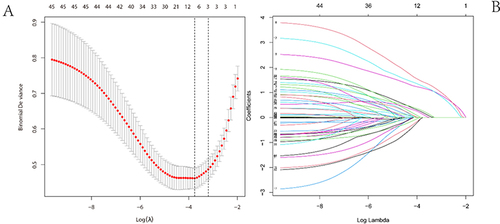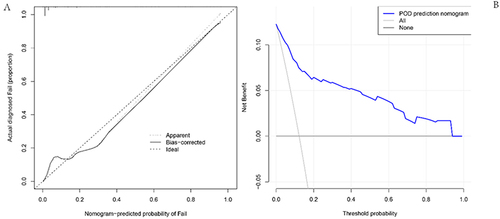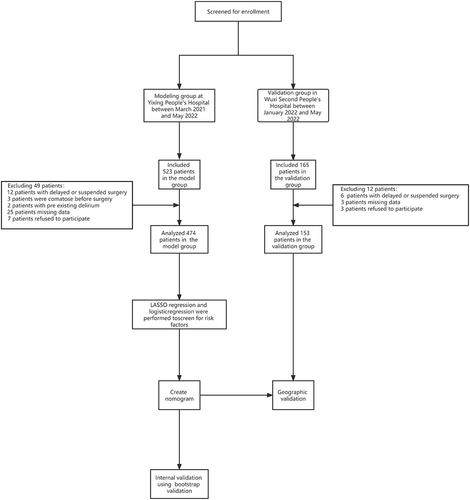Figures & data
Table 1 Demographics and Clinical Parameters of Patients in Primary and Validation Cohort
Figure 2 Selection of risk factors for POD using the LASSO binary logistic regression model.

Table 2 Predictive factors for POD
Figure 3 Developed POD nomogram.

Figure 4 Calibration curves and decision curve analysis for the POD nomogram.


